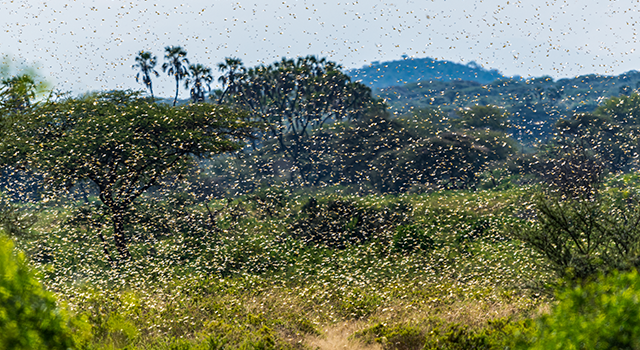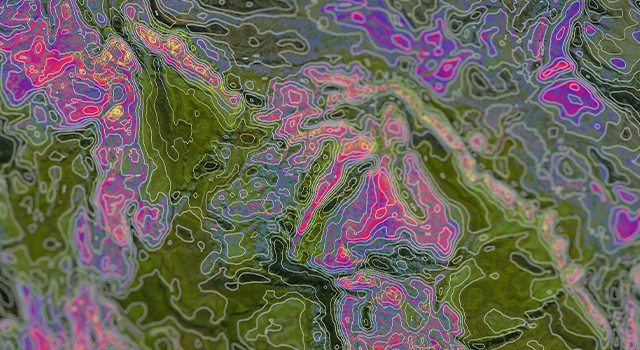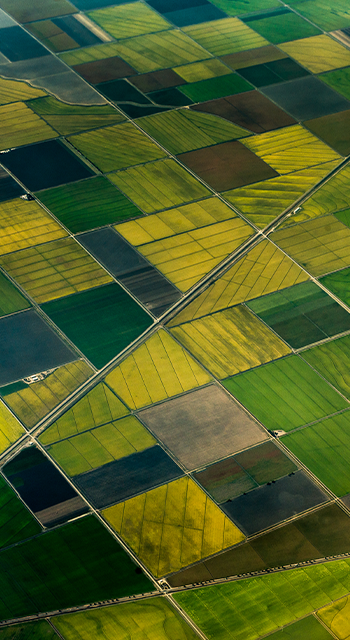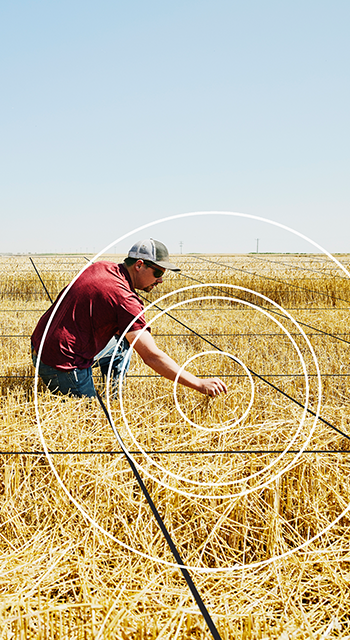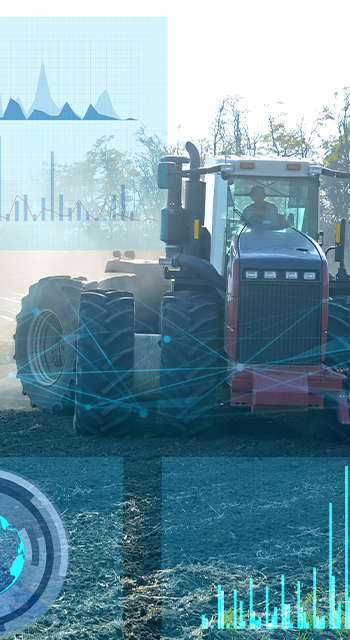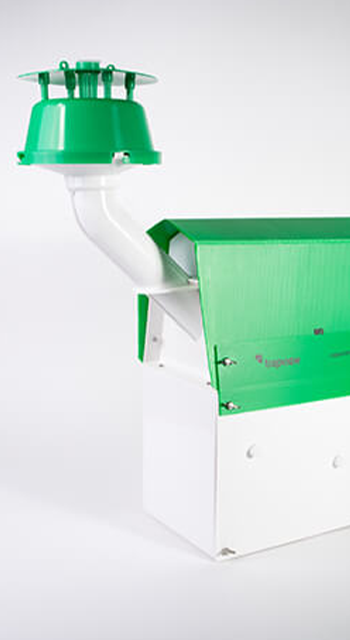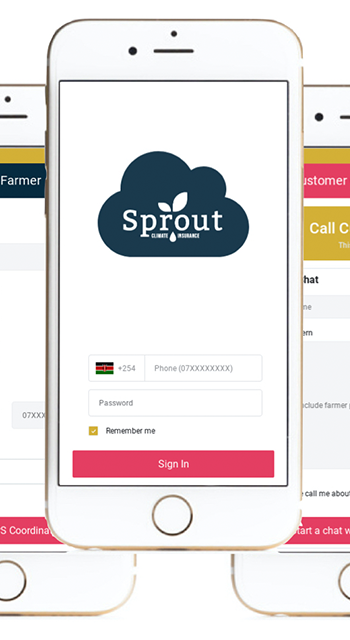Knowing what weather is coming can mean the difference between having a full harvest or no harvest at all. Advances in early warning and forecasting systems can make the difference. From satellites and drones to crowdsourced data from people on the ground, technology can enable climate information to reach those who need it when they need it.
Innovation examples
Proven technologies
Frontier technologies
Horizon technologies
REDD stands for “Reducing Emissions from Deforestation and forest Degradation”. The “+” represents forest conservation and management.
Hydroponics is using water as a medium instead of soil, whereas aeroponics is growing plants suspended in misted air. Aquaponics combines hydroponics and fish farming in an integrated nutrient recycling system.
FAO (2021c). The state of food and agriculture 2021. Food and Agriculture Organization of the United Nations (FAO). Available at: https://www.fao.org/3/CB4476EN/online/CB4476EN.html [accessed August 2022].
Allen, C.D., D.D. Breshears, and N.G. McDowell (2015). On underestimation of global vulnerability to tree mortality and forest die-off from hotter drought in the Anthropocene. Ecosphere, 6(8), 1-55.
Ibrahim, A., R.C. Abaidoo, D. Fatondji and A. Opoku (2016). Fertilizer micro-dosing increases crop yield in the Sahelian low input cropping system: A success with a shadow. Soil Science and Plant Nutrition, 62(3), 277–88.
Sebnie, W., M. Mengesha, G. Girmay, T. Feyisa, B. Asgedom, G. Beza and D. Dejene (2020). Evaluation of micro-dosing fertilizer application on sorghum (Sorghum bicholor L) production at Wag-Lasta Areas of Amhara Region, Ethiopia. Scientific Reports, 10(1), 6889.
McKinsey (2022). Precision forestry: A revolution in the woods. McKinsey. Available at: https://www.mckinsey.com/industries/paper-forest-products-and-packaging/our-insights/precision-forestry-a-revolution-in-the-woods [accessed October 2022].
FAO and FILAC (2021). Forest governance by indigenous and tribal people. an opportunity for climate action in Latin America and the Caribbean. United Nations Food and Agriculture Organization (FAO) and Fund for the Development of Indigenous Peoples of Latin America and the Caribbean (FILAC). Santiago, Chile: FAO. Available at: https://www.fao.org/documents/card/en/c/cb2930en/
World Bank (2021a). Opportunity assessment to strengthen collective land tenure rights in FCPF countries. Social inclusion in climate finance. Washington, DC: World Bank. Available at: https://openknowledge.worldbank.org/handle/10986/36499.
Gerster-Bentaya, M. (2013). Nutrition-sensitive urban agriculture. Food Security, 5, 723-37.
Beacham, A.M., L.H. Vickers, and J.M. Monaghan (2019). Vertical farming: a summary of approaches to growing skywards. The Journal of Horticultural Science and Biotechnology, 94(3), 277-283.
Agrawala, S., C. Bordier, V. Schreitter and V. Karplus (2012). Adaptation and innovation: An analysis of crop biotechnology patent data. OECD Environment Working Papers, Paris: OECD. Available at: www.oecd-ilibrary.org/environment/adaptation-and-innovation_5k9csvvntt8p-en
Nishimoto, R. (2019). Global trends in the crop protection industry. Journal of Pesticide Science, 44(3), 141-147.
Shoham, J. (2020). The rise of biological products in the crop protection and plant nutrition markets. IHS Markit. Available at: https://ihsmarkit.com/research-analysis/the-rise-of-biological-products-in-crop-protection-and-nutriti.html [accessed October 2022].
Azis, F., M. Rijal, H. Suhaimi and P.E. Abas (2022). Patent landscape of composting technology: A review. Inventions, 7 (2) Available at: www.mdpi.com/2411-5134/7/2/38.
UNEP (2021). Adaptation Gap Report 2021: The gathering storm. Nairobi: United Nationals Environment Programme. available: https://www.unep.org/resources/adaptation-gap-report-2021
Heinrich Böll Foundation (2021). 10 things to know about climate finance. [online] available: https://issuu.com/heinrichbollfoundationnorthamerica/docs/hbs-10things2021-book?embed_cta=embed_badge&embed_context=embed&embed_domain=climatefundsupdate.org&utm_medium=referral&utm_source=climatefundsupdate.org [accessed October 2022].
GCF (2022). Annual results report. Green Climate Fund (GCF). Available at: https://www.greenclimate.fund/sites/default/files/document/20220412-arr2021.pdf
Metinko, C. (2022). Why VC investors are plowing record sums into agtech. Crunchbasenews. Available at: https://news.crunchbase.com/startups/agtech-startups-vc-funding-data/.
GCA (2021). Green bonds for climate resilience: A guide for issuers. Global Center on Adaptation (GCA). Available at: https://gca.org/wp-content/uploads/2021/11/A-guide-for-issuers-Full-report-online.pdf
FAO (2015). Climate change and food security: risks and responses. Rome: Food and Agriculture Organization of the United Nations (FAO). Available at: https://www.fao.org/3/i5188e/I5188E.pdf
Singh, A. (2021). Soil salinity: A global threat to sustainable development. Soil Use and Management, 38.
IPCC (2022). Working Group II Sixth Assessment Report. Impacts, adaptation and vulnerability. Summary for policymakers. Geneva: Intergovernmental Panel on Climate Change. available: https://www.ipcc.ch/working-group/wg2/
Wiebe, K., H. Lotze-Campen, R. Sands, A. Tabeau, D. van der Mensbrugghe, A. Bieweld, B. Bodirsky, S. Islam, A. Kavallari and D. Mason-D’Croz (2015). Climate change impacts on agriculture in 2050 under a range of plausible socioeconomic and emissions scenarios. Environmental Research Letters, 10(8).
Climate-ADAPT (2019). Use of adapted crops and varieties. The European Climate Adaptation Platform Climate-ADAPT. [online] available: https://climate-adapt.eea.europa.eu/en/metadata/adaptation-options/use-of-adapted-crops-and-varieties [accessed October 2022]
González Guzmán, M., F. Cellini, V. Fotopoulos, R. Balestrini and V. Arbona (2022). New approaches to improve crop tolerance to biotic and abiotic stresses. Physiologia Plantarum, 174(1).
Cleantech Group (2021). Genetic engineering for crops and food: climate adaptation, resilience, and food security through innovation. Available at: https://www.cleantech.com/genetic-engineering-for-crops-and-food-climate-adaptation-resilience-and-food-security-through-innovation/ [accessed October 2022].
FAO (2022a). Genetically modified crops: Safety, benefits, risks and global status. Food and Agriculture Organization of the United Nations (FAO). Available at: https://www.fao.org/policy-support/tools-and-publications/resources-details/en/c/1477336/ [accessed July 2022].
NAS (2016). Genetically engineered crops: Experiences and prospects. Washington DC: National Academies of Sciences, Engineering, and Medicine (NAS). Available at: https://www.cleantech.com/genetic-engineering-for-crops-and-food-climate-adaptation-resilience-and-food-security-through-innovation/
IPCC (2019). IPCC special report on the ocean and cryosphere in a changing climate. Summary for policymakers. Geneva: IPCC, WMO, UNEP. Available at: https://www.ipcc.ch/srocc/download-report/
ALM (2021). Organic fertilizers market- opportunities and forecast 2021-2030. Allied Market Research. Available at: https://www.alliedmarketresearch.com/organic-fertilizers-market-A14536 [accessed October 2022].
CGIAR (2021). Innovation: Fertilizer microdosing. Consultative Group on International Agricultural Research (CGIAR). Available at: https://www.cgiar.org/innovations/fertilizer-microdosing/ [accessed October 2022].
USDA (2022). Virtual Fencing. A climate adaptation strategy. United States Department of Agriculture. Available at: https://www.climatehubs.usda.gov/hubs/northwest/topic/virtual-fencing-climate-adaptation-strategy [accessed October 2022].
MarketsandMarkets (2021). Hydroponics market report. Available at: https://www.marketsandmarkets.com/Market-Reports/hydroponic-market-94055021.html#:~:text=Countries%20such%20as%20the%20Netherlands,use%20of%20climate%20control%20technologies [accessed October 2022].
Dubbeling, M. and H. de Zeeuw (2011). Urban agriculture and climate change adaptation: Ensuring food security through adaptation, Resilient cities. Proceedings of the global forum 2010. Series: Local sustainability, Springer.
WEF (2018). Innovation with a purpose: The role of technology innovation in accelerating food systems transformation. Geneva: World Economic Forum. Available at: https://www3.weforum.org/docs/WEF_Innovation_with_a_Purpose_VF-reduced.pdf.
Research and Markets (2022). Global water recycle and reuse technologies market 2022: Climate change and drought resilience compels adoption of water reuse. Available at: https://www.globenewswire.com/en/news-release/2022/03/18/2405982/28124/en/Global-Water-Recycle-and-Reuse-Technologies-Market-2022-Climate-Change-and-Drought-Resilience-Compels-Adoption-of-Water-Reuse.html [accessed October 2022].
Fischer, G., F. Tubiello, H. Velthuizen and D. Wiberg (2007). Climate change impacts on irrigation water requirements: Effects of mitigation, 1990–2080. Technological Forecasting and Social Change, 74, 1083–107.
Gondim, R., M.A. Castro, A. Maia, S. Evangelista and S. Fuck Jr (2012). Climate change impacts on irrigation water needs in the Jaguaribe river basin. JAWRA Journal of the American Water Resources Association, 48 (2) 355–65.
Woznicki, S., A. Nejadhashemi and M. Parsinejad (2015). Climate change and irrigation demand: Uncertainty and adaptation. Journal of Hydrology: Regional Studies, 34.
FAO (2022c). Water: Key facts. United Nations Food and Agriculture Organization (FAO). Available at: https://www.fao.org/water/en/#:~:text=FAO%20estimates%20that%20irrigated%20land,improved%20irrigation%20management%20and%20practices [accessed October 2022].
CMI (2022). MENA drip irrigation system market 2022 analysis by market trends (drivers, constraints, opportunities, threats, challenges and investment opportunities), size, share and outlook. Coherent Market Insights. Available at: https://www.digitaljournal.com/pr/mena-drip-irrigation-system-market-comprehensive-research-future-trends-industry-analysis-segments-and-competitive-landscape-jain-irrigation-systems-ltd-netafim-ltd-eurodrip-sa [accessed October 2022].
IFPRI (2010). What is the irrigation potential for Africa? International Food Policy Research Institute (IFPRI). Available at: https://www.ifpri.org/publication/what-irrigation-potential-africa
Evans, R. and E. Sadler (2008). Methods and Technologies to Improve Efficiency of Water Use. Water Resources Research, 44(7).
Kozlowski, T.T. and S.G. Pallardy (1997). 8 - Cultural practices and reproductive growth. In T.T. Kozlowski and S.G. Pallardy, eds., Growth control in woody plants, San Diego: Academic Press, 394-435.
FAO (2021d). The state of the world’s land and water resources for food and agriculture – Systems at breaking point. Synthesis report. Rome: Food and Agriculture Organization of the United Nations (FAO). Available at: www.fao.org/3/cb7654en/online/cb7654en.html [accessed October 2022]
Mekonnen, M.M. and A.Y. Hoekstra Four billion people facing severe water scarcity. Science Advances, 2(2), e1500323.
Qin, Y. and A. Horvath (2020). Use of alternative water sources in irrigation: Potential scales, costs, and environmental impacts in California. Environmental Research Communications, 2.
Velasco-Muñoz, J.F., J.A. Aznar-Sánchez, A. Batlles-delaFuente and M.D. Fidelibus (2019). Rainwater harvesting for agricultural irrigation: An analysis of global research. Water, 11(7).
Rojas-Downing, M.M., A.P. Nejadhashemi, T. Harrigan and S.A. Woznicki (2017). Climate change and livestock: Impacts, adaptation, and mitigation. Climate Risk Management, 16, 145-63.
Boone, R., R. Conant, J. Sircely, P. Thornton and M. Herrero (2018). Climate change impacts on selected global rangeland ecosystem services. Global Change Biology, 24(3), 1382–93.
FAO (2012b). Livestock and landscapes. Food and Agriculture Organization of the United Nations (FAO). Available at: https://www.fao.org/3/ar591e/ar591e.pdf [accessed October 2022].
Heinke, J., M. Lannerstad, D. Gerten, P. Havlík, M. Herrero, A. Notenbaert, H. Hoff and C. Müller (2020). Water use in global livestock production – Opportunities and constraints for increasing water productivity. Water Resources Research, 56.
CIAT (2014). Submission from the International Center for Tropical Agriculture (CIAT) on behalf of the CGIAR Research Program on Climate Change, Agriculture and Food Security (CCAFS), to UNFCCC SBSTA 42 on issues related to agriculture in response to SBSTA decision FCC/SBSTA/2014/L.14. The International Center for Tropical Agriculture. Available at: https://unfccc.int/files/documentation/submissions_from_non-party_stakeholders/application/pdf/516.pdf [accessed October 2022].
Rivera-Ferre, M.G., F. López-i-Gelats, M. Howden, P. Smith, J.F. Morton and M. Herrero (2016). Re-framing the climate change debate in the livestock sector: Mitigation and adaptation options. WIREs Climate Change, 7(6), 869–92.
Williams, T., C. Wilson, P. Wynn and D. Costa (2021). Opportunities for precision livestock management in the face of climate change: A focus on extensive systems. Animal frontiers: The review magazine of animal agriculture, 11, 63–8.
IFAD (2009). Livestock and climate change. International Fund for Agricultural Development (IFAD). Available at: https://www.uncclearn.org/wp-content/uploads/library/ifad81.pdf
IPBES (2019). The global assessment report on biodiversity and ecosystem services: A summary for policymakers. Bonn, Germany: Intergovernmental Science-Policy Platform on Biodiversity and Ecosystem Services. Available at: https://ipbes.net/sites/default/files/2020-02/ipbes_global_assessment_report_summary_for_policymakers_en.pdf
FAO (2020). Global forest resources assessment 2020. Rome: Food and Agriculture Organization of the United Nations (FAO). Available at: https://www.fao.org/documents/card/en/c/ca9825en
Sakr, G., I. Elhajj and G. Mitri (2011). Efficient forest fire occurrence prediction for developing countries using two weather parameters. Engineering Applications of Artificial Intelligence, 24(5), 888–94.
Six, D. (2019). Forest Health and Biotechnology: Possibilities and Considerations. Washington, DC: National Academies Press.
Reytar, K., D. Levin, E. Goldman, F. Stolle, M. Weisse and P. Potapov (2022). 36 countries are gaining more trees than they're losing. World Resources Institute (WRI). Available at: https://www.wri.org/insights/tracking-global-tree-cover-gain?utm_campaign=wridigest&utm_source=wridigest-2022-06-29&utm_medium=email&utm_content=learnmore [accessed October 2022].
JRC (2022). Seasonal trends for EU countries. European Commission Joint Research Centre (JRC). Available at: https://effis.jrc.ec.europa.eu/apps/effis.statistics/seasonaltrend [accessed October 2022].
UNFCCC (2022c). UN early warning systems must protect everyone within five years. United Nations Framework Convention on Climate Change (UNFCCC). Available at: https://unfccc.int/news/un-early-warning-systems-must-protect-everyone-within-five-years [accessed October 2022].
Ky-Dembélé, C., J. Bayala, D.S. Dayamba, C. Adeyemi, P. Dorward, A. Agali, A. Diakite, R.B. Zougmore and N. Lamien (2020). Taking the participatory integrated climate services for agriculture (PICSA) approach to extension actors for strengthening resilience in Africa: Five years’ experience in West Africa. CGIAR Research Program on Climate Change, Agriculture and Food Security (CCAFS). Available at: https://ccafs.cgiar.org/resources/publications/takingparticipatoryintegrated-climate-services-agriculture-picsa [accessed October 2022].
Cowan, Y., E. O’Brien, and N. Rakotomalala-Rakotondrandria (2014). Community-based early warning systems: Key practices for DRR implementers. OCHA and FAO. Available at: https://www.fao.org/publications/card/en/c/57c0a761-8d31-4f0f-8a07-27e1ea0568d5/.
Rydhmer, K., E. Bick, L. Still, A. Strand, R. Luciano, S. Helmreich, B. Beck, C. Grønne, L. Malmros, K. Poulsen, F. Elbæk, M. Brydegaard, J. Lemmich and T. Nikolajsen (2022). Automating insect monitoring using unsupervised near-infrared sensors. Scientific Reports, 12.
FAO (2021a). Climate change fans spread of pests and threatens plants and crops, new FAO study. Food and Agriculture Organization of the United Nations (FAO). Available at: https://www.fao.org/news/story/en/item/1402920/icode/#:~:text=FAO%20estimates%20that%20annually%20up,insects%20at%20least%20%2470%20billion [accessed October 2022].
Friedman, R., E. Mackenzie, R. Baiga, K. Inape, S. Crimp and M. Howden (2022). Designing climate information services to enhance resilient farming activities: Lessons from Papua New Guinea. Frontiers in Climate, 4, 871987.
World Bank (2020b). The locust crisis - The World Bank’s Response. The World Bank Group. Available at: https://www.worldbank.org/en/news/factsheet/2020/04/27/the-locust-crisis-the-world-banks-response [accessed October 2022].
CERF (2020). CERF allocation report on the use of funds and achieved results. Eastern Africa rapid response locusts response 2020. Central Emergency Response Fund. Available at: https://cerf.un.org/sites/default/files/resources/20-RR-EAF-40783_Eastern%20Africa_CERF_Report-regularpdf.pdf.
FAO (2021b). A high-tech response is helping countries win battle against Desert Locust. Food and Agriculture Organization of the United Nations (FAO). Available at: https://www.fao.org/news/story/pt/item/1397940/icode/ [accessed October 2022].
Bjornlund, V., H. Bjornlund, and A.F. Van Rooyen (2020). Why agricultural production in sub-Saharan Africa remains low compared to the rest of the world – a historical perspective. International Journal of Water Resources Development, 36(sup1), S20-S53.
Gilbert, N. (2009). Digital soil map for Africa launched. Nature News, 13 January. Available at: www. nature.com/articles/news.2009.17.
ICRAF (2020). The land degradation surveillance framework. World Agroforestry Center [International Council for Research in Agroforestry] (ICRAF). Available at: https://worldagroforestry.org/output/land-degradation-surveillance-framework [accessed October 2022].
Forbes (2018). Smart dust is coming, are you ready? Forbes. Available at: https://www.forbes.com/sites/bernardmarr/2018/09/16/smart-dust-is-coming-are-you-ready/?sh=745edf6c5e41 [accessed October 2022].

